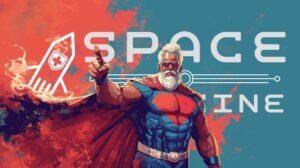The Dawn of Post-Labor Economics: Navigating the Future with AI, Automation, and New Economic Models
In an era characterized by rapid advances in Artificial Intelligence (AI) and robotics, the concept of post-labor economics is not just a theoretical abstraction but an impending reality. As we stand on the brink of a transformative shift, it becomes imperative to understand the role of automation replacing human labor and the sweeping changes it heralds for our societal structures.
Understanding Post-Labor Economics
Post-labor economics, a term gaining traction, refers to a future where the economic necessity for human labor diminishes significantly due to automation and AI innovations. This seismic shift prompts a reevaluation of how economies are structured and function. As traditional employment becomes less common, the question arises: what is the future of human work in an AI economy?
The Impact of AI and Robotics on Jobs
The impact of AI and robotics on jobs is twofold. On one hand, automation boosts economic productivity without human labor by streamlining operations and reducing costs. On the other, it raises concerns about widespread job displacement. How do we balance increased efficiency with the potential societal costs?
Statutory and Experience Jobs: The Human Touch in a Digital Age
Even in a highly automated economy, certain roles, termed as statutory jobs in post-labor society, are likely to remain human. These include critical decision-making positions or jobs requiring a nuanced understanding of human ethics and governance. Similarly, experience-driven roles such as artists and therapists, where the human connection is irreplaceable, will continue to hold value.
Economic Models for a New Era
Stakeholder Capitalism and Economic Agency
As we navigate this new terrain, the principles of stakeholder capitalism and economic agency suggest a shift from traditional shareholder models to systems where broader groups have economic stakes and decision-making power. Here, tokenizing the economy with blockchain technology could play a pivotal role by democratizing ownership of capital-intensive automated systems, such as data centers and robotic factories.
Hyperlocal Securities Exchange
Imagine a hyperlocal securities exchange where individuals can invest in local AI and robotics ventures, effectively becoming co-owners and beneficiaries of the technological bounty. This model promotes a more inclusive economic environment, aligning with the “transforming traditional capitalism with AI” narrative.
Prospects and Challenges
As intriguing as these models are, they also pose significant challenges. With the reduction of consumer demand without labor wages, how do we ensure economic stability? Can a society sustain itself when the traditional labor-capital exchange disappears? These are questions that not only economists but also policymakers must wrestle with.
Conclusion: Embracing the Inevitable Transformation
The economic implications of artificial intelligence are profound and unavoidable. As we look forward to a future characterized by fully automated luxury communism or any other post-labor economic structure, our focus should not only be on technological advancement but also on ensuring social and economic systems that can withstand such significant transitions.
The journey towards a post-labor economy offers both immense opportunities and serious challenges. By investing in sustainable technologies like AI and understanding the potential of new economic models, we can aim not only for economic growth but for a truly inclusive and progressive future.
If you’re fascinated by the potential of AI and its transformative impact on society and economy, subscribe to stay updated with the latest insights and developments in this thrilling journey into the future. Don’t miss out on comprehending the breadth of possibilities in a world where investing in robots and AI for economic growth is just the beginning!
FAQs about Post-Labor Economics and the AI-Driven Future
What is Post-Labor Economics?
Post-labor economics is a term describing a future scenario where the need for human labor is significantly reduced due to advancements in AI and automation technologies. This shift could redefine how societal and economic structures operate, leading to new models of economic productivity and employment. Learn more about post-labor economics.
How Does AI Impact Jobs?
AI impacts jobs by automating tasks that were previously performed by humans, which can lead to both job displacement and the creation of new opportunities. While some sectors may experience job losses, AI also has the potential to enhance job efficiency and create new industries and roles that focus on managing AI technologies and processes.
What is Stakeholder Capitalism?
Stakeholder capitalism is an economic system where corporations are oriented to serve the interests of all their stakeholders, including employees, customers, suppliers, and the wider community, not just shareholders. In the context of post-labor economics, this model could help ensure that the benefits of AI and automation are shared more broadly across society. More on stakeholder capitalism.
What Are the Challenges of a Future Where Human Labor Loses Its Traditional Value?
One of the primary challenges is the potential for increased economic inequality if the profits from AI and automation are not equitably distributed. Another concern is ensuring meaningful engagement and purpose for individuals when traditional labor roles are no longer a necessity. These challenges require careful policy considerations and innovative economic models to maintain societal stability and personal fulfillment.
How Can We Prepare for an AI-Driven Economy?
Preparing for an AI-driven economy involves investing in education and training programs that can equip the workforce with skills relevant to the new technology landscape. It also includes advocating for policies that promote fair wealth distribution and the development of economic systems like universal basic income or stakeholder capitalism, which can help mitigate the risks associated with reduced demand for human labor.
By addressing these FAQs, individuals and policymakers alike can better understand and navigate the impending changes brought about by the rise of AI and automation in a post-labor world. Stay informed and proactive in adapting to these changes by subscribing for more insights on this transformative journey.






